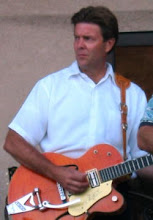
Here’s an all American - Independence Day pop quiz. What song do we sing at ballgames, air shows, in our Churches, and at most patriotic events? Sure – you guessed it – too easy. The English poem set to music in 1770 called "To Anacreon in Heaven."
Some folks know it better by its Americanized name - The Star-Spangled Banner. The Story behind our National Anthem bears re-telling this 4th of July.
The time of this story is September of 1814, two years into the war of 1812. The nation was just 38 years old and we were a hairs width away from losing America to the British. 4,000 battle hardened British troops, led by their General Robert Ross and had just laid waste to our Nation's 14 year old capitol city of Washington, D.C. They burned nearly every Federal building, including the Treasury, the Supreme Court, the Capitol and the White House. President Madison and his wife narrowly escaped and were hiding in nearby Virginia.
Fresh from the death and destruction in Washington D.C. the British were headed by ships to Baltimore Maryland. They knew if they captured Fort McHenry on the Baltimore Harbor they could effectively cut the United States in half. The British had captured an elderly and well respected American physician, Dr. William Beanes. Dr. Beanes was accused of spying, and was taken as a prisoner aboard the British Flag ship Tonnant anchored in the Baltimore harbor. President Madison called upon a DC attorney, Francis Scott Key to negotiate a prisoner exchange with the British. Francis Key and another fellow who was experienced in negotiating prisoner exchanges named Colonel Skinner, sailed for Baltimore. They reached the Tonnant under a flag of truce and actually negotiated a prisoner exchange with the British Admiral of the fleet, Sir Alexander Cochrane.
One small problem surfaced. The Admiral admitted to Key and Skinner that the whole prisoners exchange treaty would be meaningless in two days anyway. He pointed off the ships bow towards the tip of the peninsula to Fort McHenry and said that with the destruction of Fort McHenry, taking Baltimore would be a snap. The men asked how the British planned to do this. The Admiral pointed to a group of 16 heavily armored and weapon-ized ships approaching, explaining that with relentless bombardment, no fort could withstand the destruction of the British fleet.
The Admiral explained that he had sent word to the Fort that as soon as the Americans in Fort McHenry would lower their flag, the shelling would stop. They even predicted the war would then be over and all the prisoners on both sides would go free… as British, not American citizens. The three men were placed under guard aboard the H.M.S. Surprise to witness the planned attack from the deck of that ship. That night, September 12th 1814 the ships maneuvered to within gun range of the Fort and unleashed for 30 solid hours on Fort McHenry.
The British ships fired hundreds of explosive rounds into the Fort. The design of this Fort had included huge ramparts, large defensive barriers surrounding the interior – in a sort of pentagonal shape. The shelling was relentless, and Francis Key was forced to watch this macabre attack from the ship he, Skilling and Dr. Beane were held on. It was only through the flashing of the multiple explosions that Key could glimpse whether the Stars and Stripes of our colonial flag was still visible or not. Hence the words describing how through the rockets' red glare, the bombs bursting in air gave proof through the night that our flag was still there. The British eventually trained their gunships on the flagpole itself and began a whole new barrage. The morning air on September 14th was so thick with smoke from the explosions and mixed with the dewy mists of the daybreak. The haze eventually thinned out enough so the three men could see the “broad stripes and bright stars” and that our Flag was still there. This signaled their freedom as Americans was still intact.
That morning, Francis Scott Key, pulled an envelope from his pocket and wrote a poem. This epic verse was published in the Baltimore newspaper and later by other newspapers along the East Coast. It was entitled “In Defense of Fort McHenry”. A few years later it was set to the music of the English drinking song To Anacreon in Heaven and re-named the Star Spangled Banner. It was not until 1931 that Congress declared it to be the official National Anthem.
Few people know all four verses, as the last three are generally dropped for brevity. The fourth verse bears repeating here in the column as it speaks to one of my core beliefs that America was and is a nation blessed by God.
Oh! thus be it ever, when freemen shall stand
Between their loved homes and the war's desolation,
Blest with victory and peace, may the Heaven rescued land
Praise the Power that hath made and preserved us a nation
Then conquer we must, when our cause it is just,
And this be our motto: "In God is our Trust"
And the star-spangled banner in triumph shall wave
O'er the land of the free and the home of the brave.

No comments:
Post a Comment